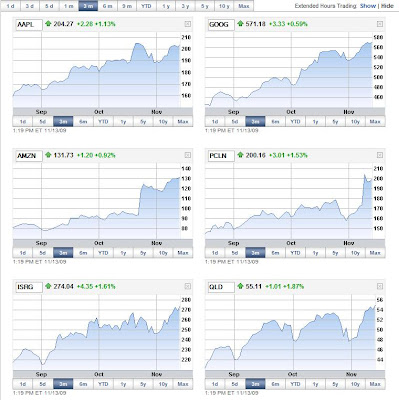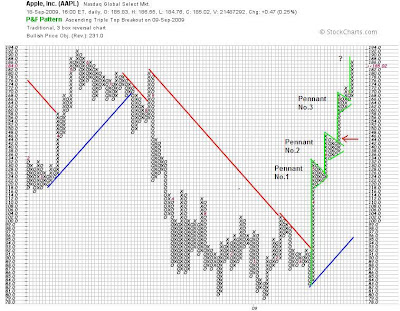Australia seems to be the place to be, as far as the economy goes. Never in recession, Aussie $ 14-month high, stock market 14-month high, the central bank raises rates and the market rallies. Real estate value has gone UP this year down there. Businesses are increasingly confident, both domestic and export, and consumers are spending.
So, today's feature is Rio Tinto (RTP), an Australian miner that mines what the growing economies of the world (like China) wants.

This is a 3-year weekly chart. Talk about extreme. After hitting the 2008 summer commodity bubble high of $540, it lost almost 90% and hit the bottom in December 08 at $57. Since then, it has tripled in price but still nowhere near even the 38.2% retracement.
If the Australian economy is actually what they think it is down there (=robust growth) and the global financial markets don't crash again, however, Rio Tinto may have plenty of upside from here from technical point of view.
RSI is holding the trendline, and it's shaping into a symmetrical triangle or pennant ready to break either way. Same thing is happening in the stock price. A symmetrical triangle is usually a continuation pattern, and tends to break in the direction prior to the triangle. In this case, it's UP.
During the triangle formation, the weekly volume has been declining. That's usually a good sign. Slow stochastics set at 60,3 has backtested the 20 line and rebounded. Another good sign. CCI is still negative, but it is also holding the trendline from December.
If this pattern breaks out to the upside, the target price is somewhere near $300, 75% up from where it's at right now. If it should break to the downside, it will be back to $50s.
The rally that no one believed in back in March, April,
May, June, July,
August, and
September still goes on. I'm sitting on my longs as none of my holdings has signaled a sell. I sold ABK as a housekeeping (of trimming the underperformers), but hasn't added new stocks for holding long. I just have options here and there, because from every corner I hear the calls for the market topping right here right now.
But I kind of like what I see in RTP as a long. I will see if it breaks out from the triangle/pennant, and if it backtests the trendline. Or I could buy right now, and put the stop at the upper trendline.
Despite the calls for the market top, a lot of stocks are setting up or are breaking out to the upside. They are almost too many to keep track of.
This is just my personal opinion and you should always do your own due dilligence, but it sure seems there are lots of opportunities to make money before the next collapse, unless it comes in very short order. (I could always use extra money to survive the catastrophe when it comes..)
















































